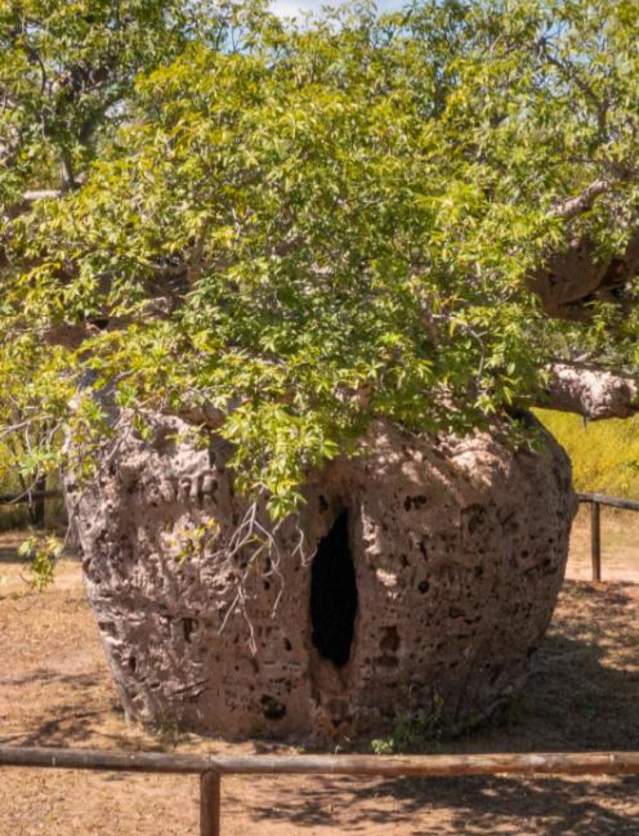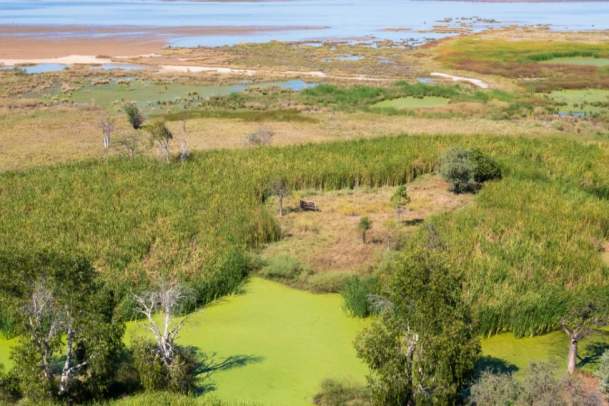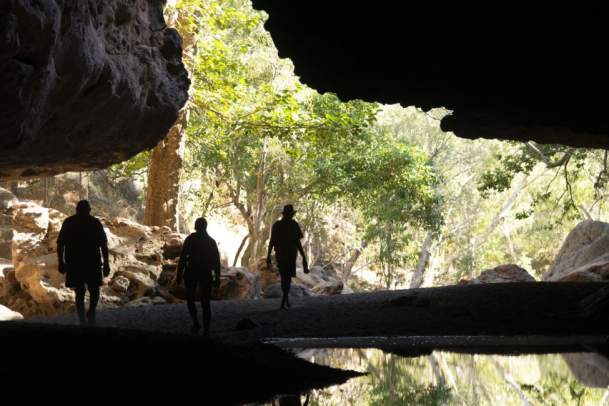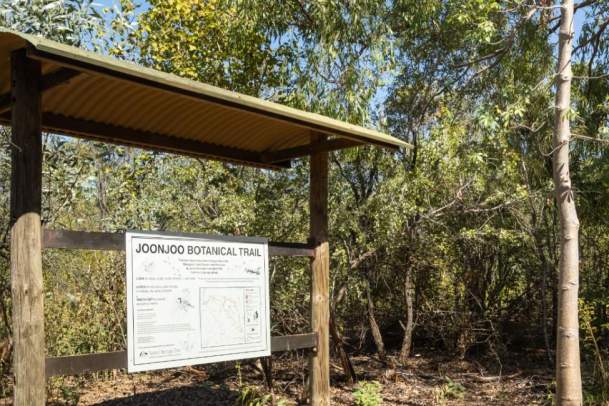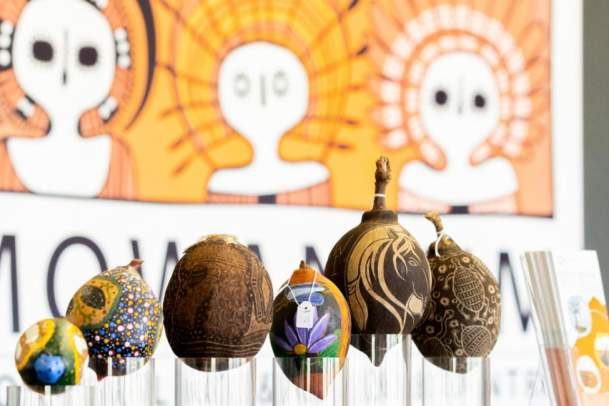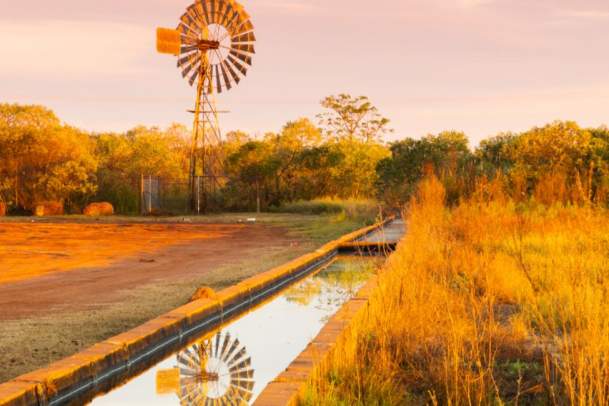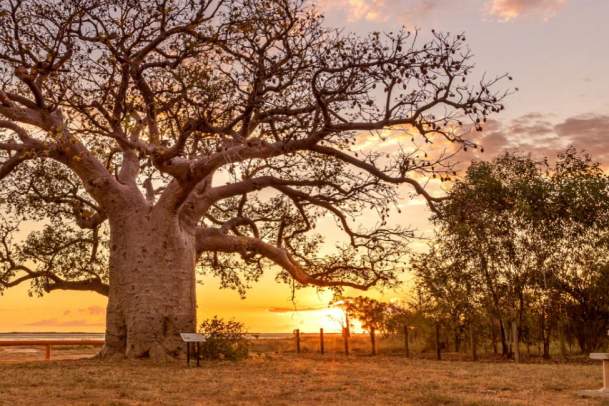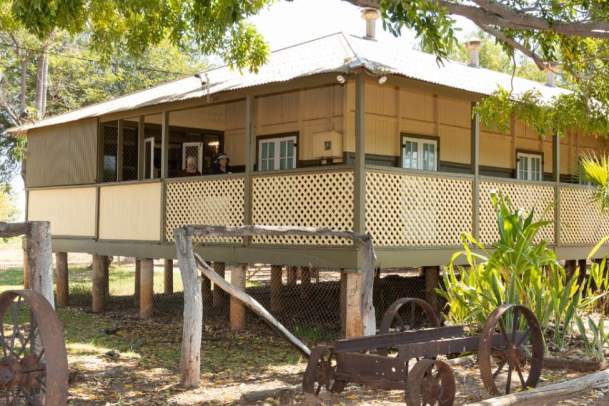Boab Prison Tree
Boab Prison Tree Rd, Off Derby Highway, Derby, 6728
The Boab Prison Tree, also known as Kunumudj is believed to be 1,500 years old.
This remarkable tree has a circumference of over 14 metres and has an oblong slit in the bark, through which the hollow centre is visible - this is common among older boab trees when the soft spongy trunk tissue dies off, causing the trunk to become hollow.
The Boab Prison Tree is a culturally significant site for the local Nyikina and Warrwa people and is also important in the story of the early settlement of Derby and the region’s pastoral industry. It is known to have been used for several different purposes - accounts from the early 1900’s indicate that the tree had been in use by local Aboriginal people, whether as a resting place or a sacred place is unclear. The tree and adjacent Myalls Bore were also the last overnight stop for local pastoralists droving cattle to the port at Derby. The Boab prison tree is also said to have been used as a prison, or as a holding area for Aboriginal prisoners being transported long distances to the gaol at Derby.
Interpretative signage at the entrance to the Boab Prison Tree provides more information on the history, natural environment and Aboriginal heritage of the site and its surrounds.
The Prison Tree is a registered Aboriginal Site and is on the WA State Heritage Register. Visitors are requested to respect the cultural sensitivity of the site and not climb into or approach close to the tree.
Approximately 7km from Derby along Derby Highway
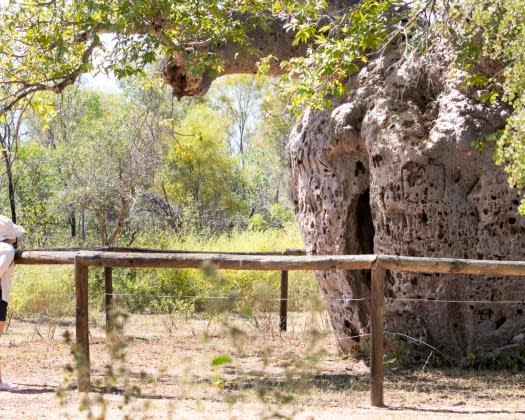
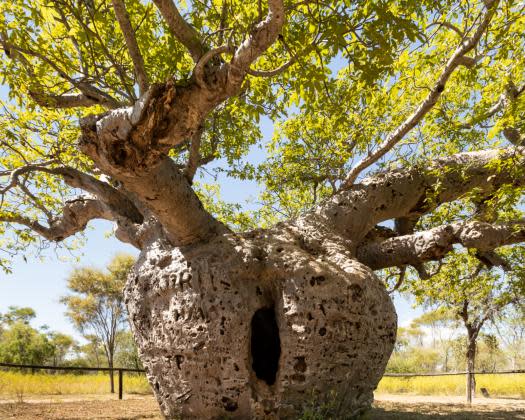
Birdwatching
Both keen and casual birdwatchers will rejoice at the many spotting opportunities in and around…
Derby Jetty
A visit to Derby wouldn’t be complete without a walk along the jetty to take in the sunset, or…
Fishing In Derby
Derby and the surrounding areas offer some sensational fishing spots. Catch the elusive barramundi…
Jandamarra And The Pigeon Heritage Trail
Discover the intriguing story of the legendary Bunuba man known as Jandamarra or Pigeon, on the…
Joon Joo Botanical Trail
The Joon Joo Botanical Trail is a 3km looped walking trail approximately 5km from Derby. Along the…
Mowanjum Aboriginal Art And Cultural Centre
The Mowanjum Aboriginal Art and Cultural Centre is a creative hub for the Worrorra, Ngarinyin and…
Myalls Bore And Water Trough
Visit Myalls Bore, near Derby to witness the ingenuity of the early farmers who drew water from the…
Walking & Heritage Trails In Derby
A great way to explore Derby is to follow its walking trails, including the Heritage Trail, Pastoral…
Wharfinger House Museum
At the corner of Loch and Elder Street stands the former residence of Derby’s Wharfinger, or…


